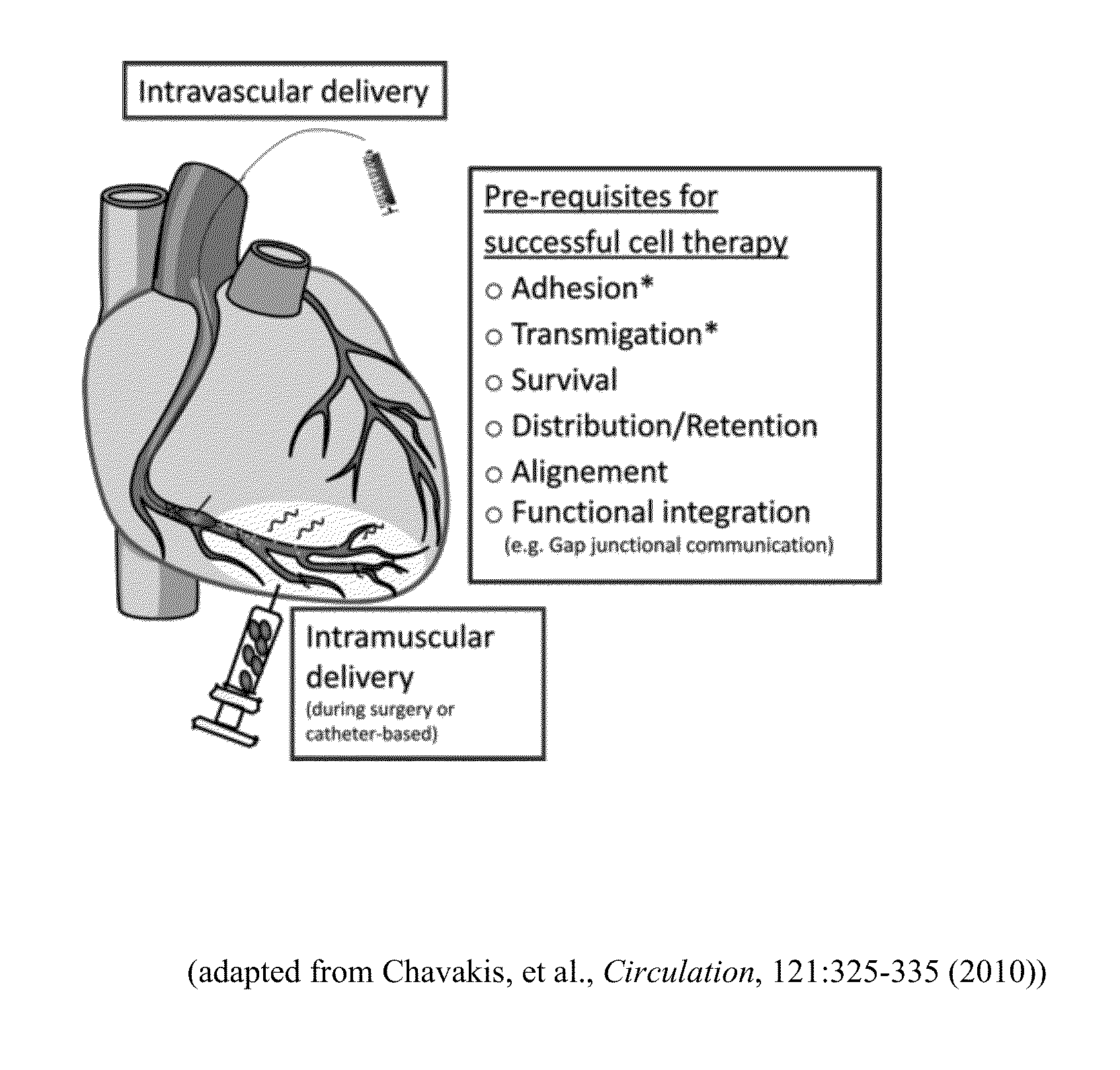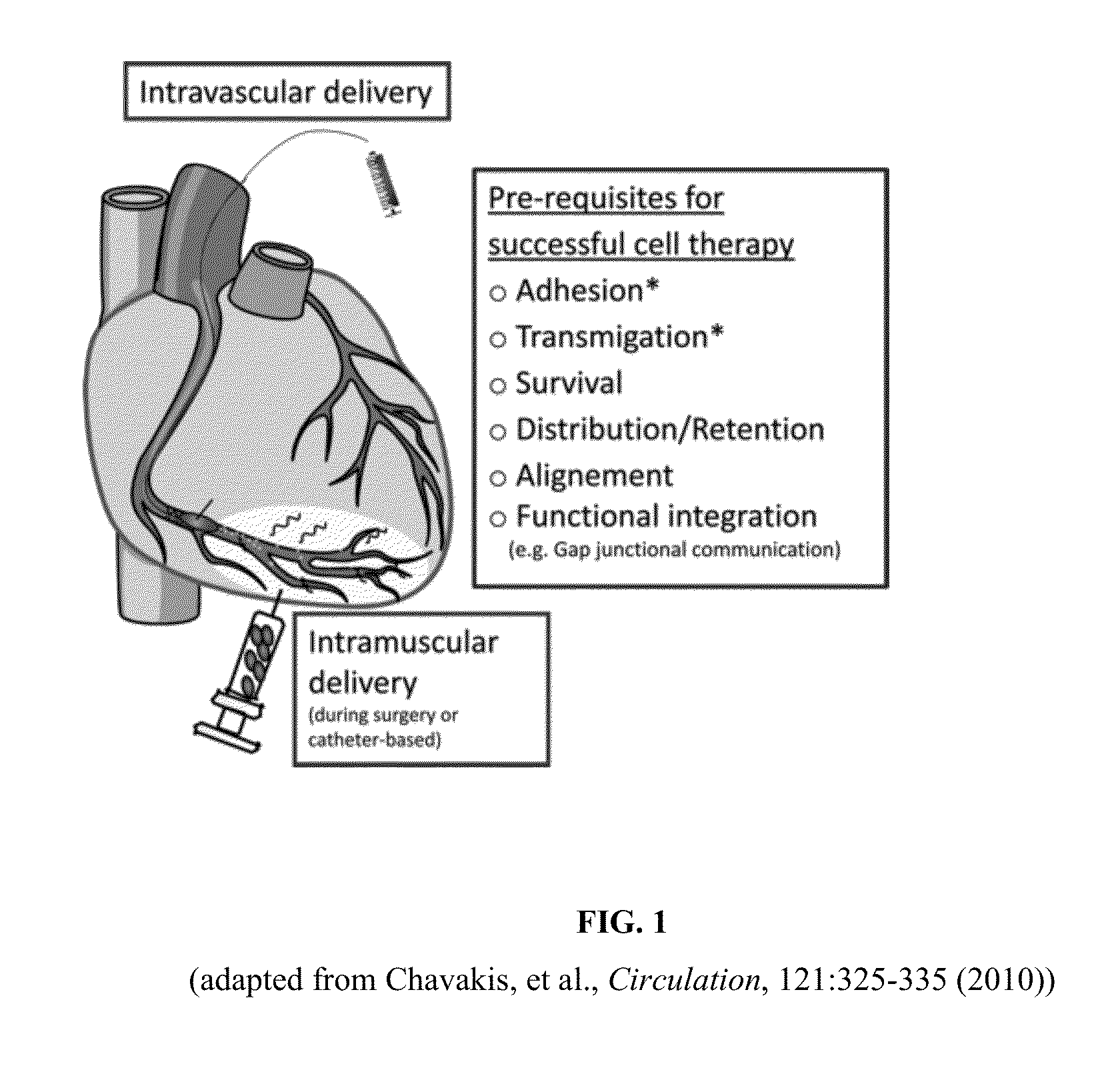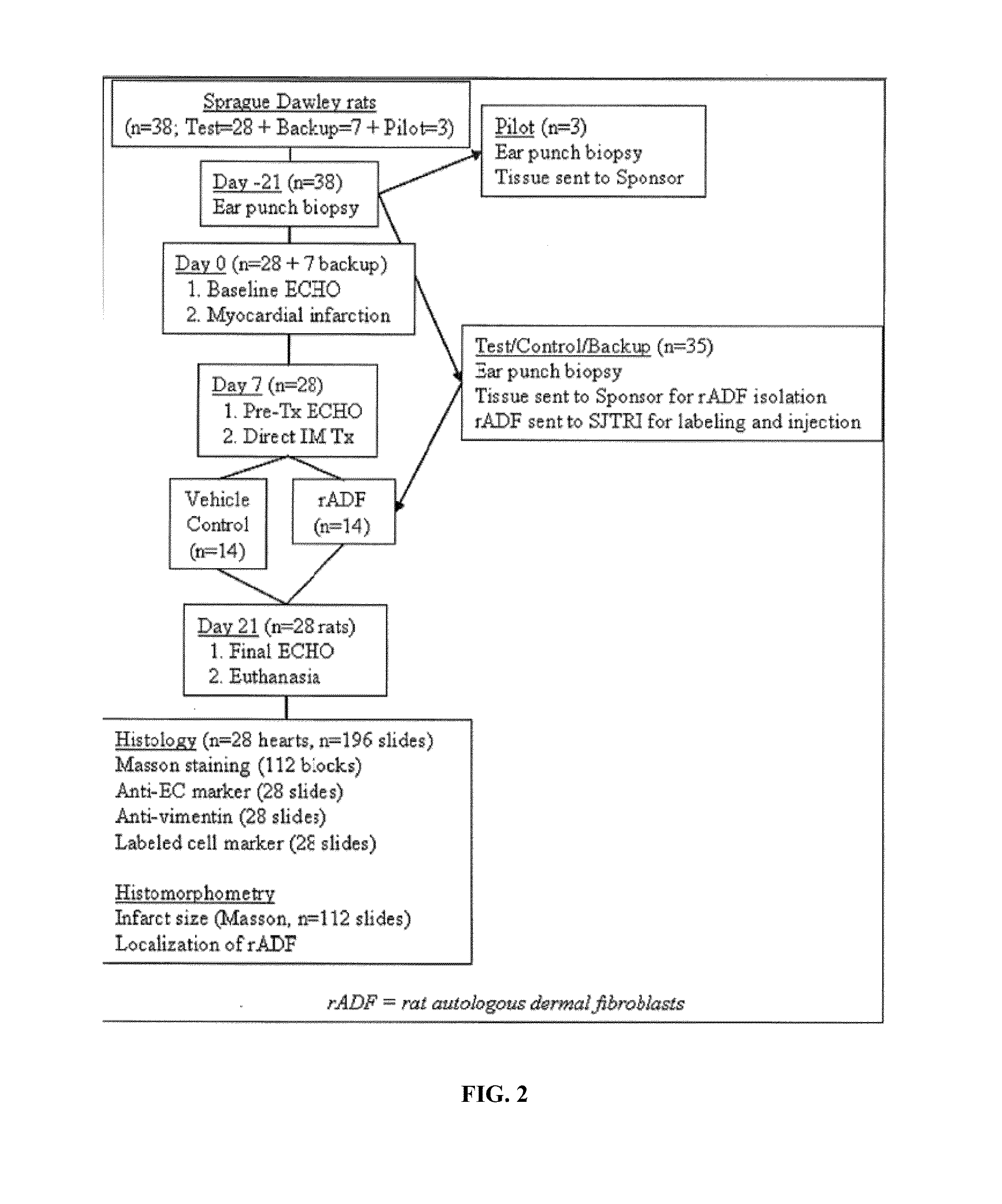Methods and Compositions for Treating Post-Cardial Infarction Damage
- Summary
- Abstract
- Description
- Claims
- Application Information
AI Technical Summary
Benefits of technology
Problems solved by technology
Method used
Image
Examples
example 1
Myocardial Injection of Autologous Fibroblast Cell Suspension in Mice
[0098]Methods and Materials
[0099]FIG. 2 is a schematic of the protocol used in the mouse study.
[0100]On Day 7 after infarction, rats were given left lateral thoracotomy direct intra-myocardial injections of cell / control article. A total of four (4) injections of 20 μl each distributed in and around the infarcted region. Injections were performed using a glass Hamilton syringe with a 27G needle. A total of 1 million cells in 80 μl were delivered to the infarcted myocardium. Incisions were closed and the animals recovered.
[0101]Several Parameters were measured to determine changes in function.
[0102]Ejection fraction (EF) is the most commonly used parameter of left ventricular (LV) systolic function on clinical grounds. Dickstein, et al., Eur. Heart J., 29(19):2388-442 (2008). Following myocardial infarction, the ejection fraction (EF) is an indiscriminate predictor of both non-sudden cardiac death (NSCD) and sudden c...
PUM
 Login to View More
Login to View More Abstract
Description
Claims
Application Information
 Login to View More
Login to View More - R&D
- Intellectual Property
- Life Sciences
- Materials
- Tech Scout
- Unparalleled Data Quality
- Higher Quality Content
- 60% Fewer Hallucinations
Browse by: Latest US Patents, China's latest patents, Technical Efficacy Thesaurus, Application Domain, Technology Topic, Popular Technical Reports.
© 2025 PatSnap. All rights reserved.Legal|Privacy policy|Modern Slavery Act Transparency Statement|Sitemap|About US| Contact US: help@patsnap.com



